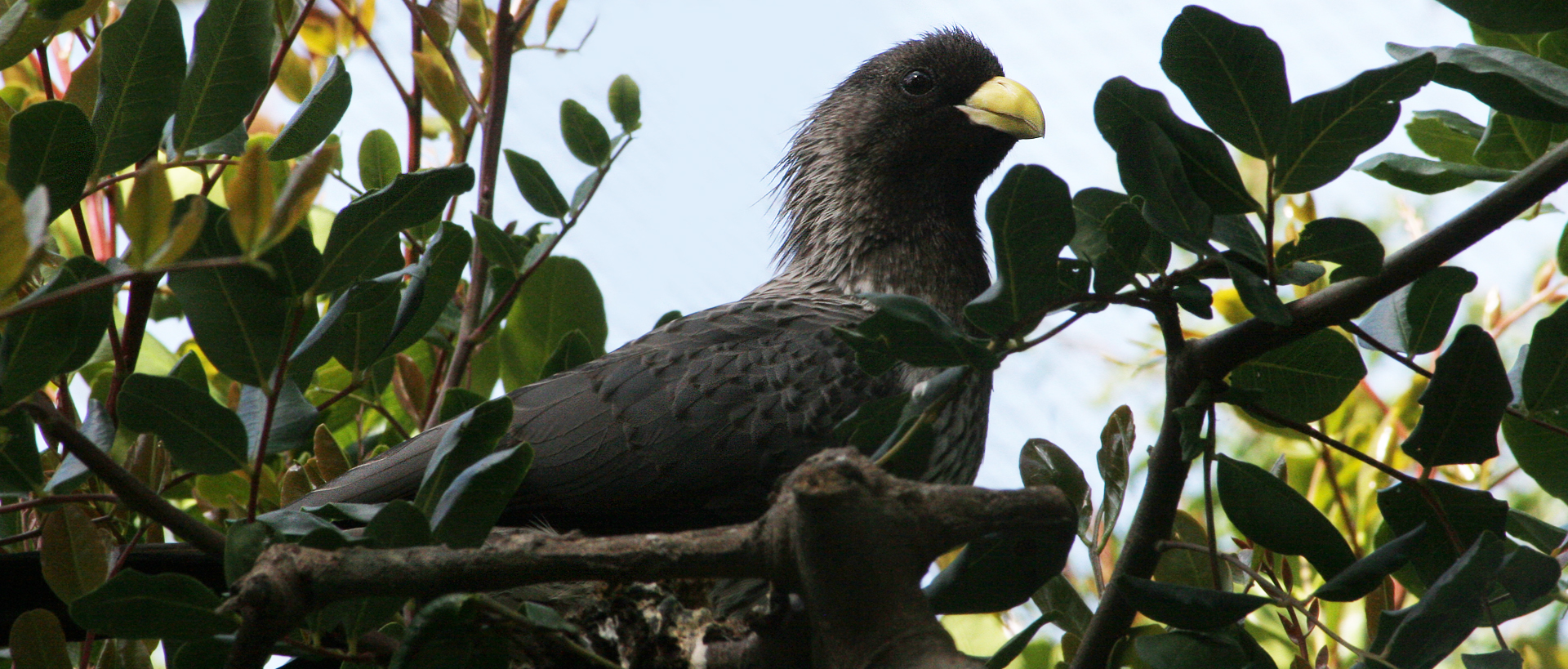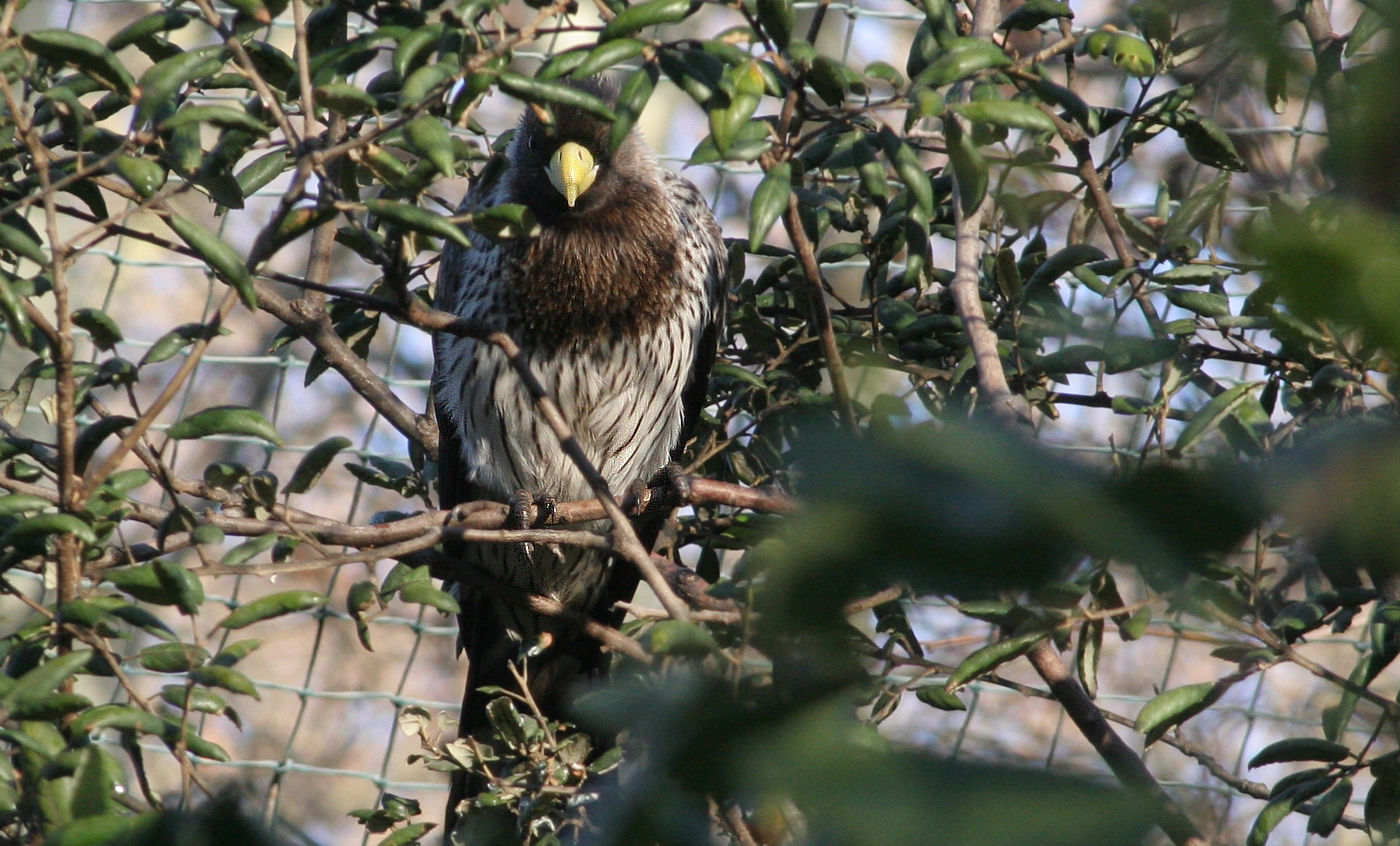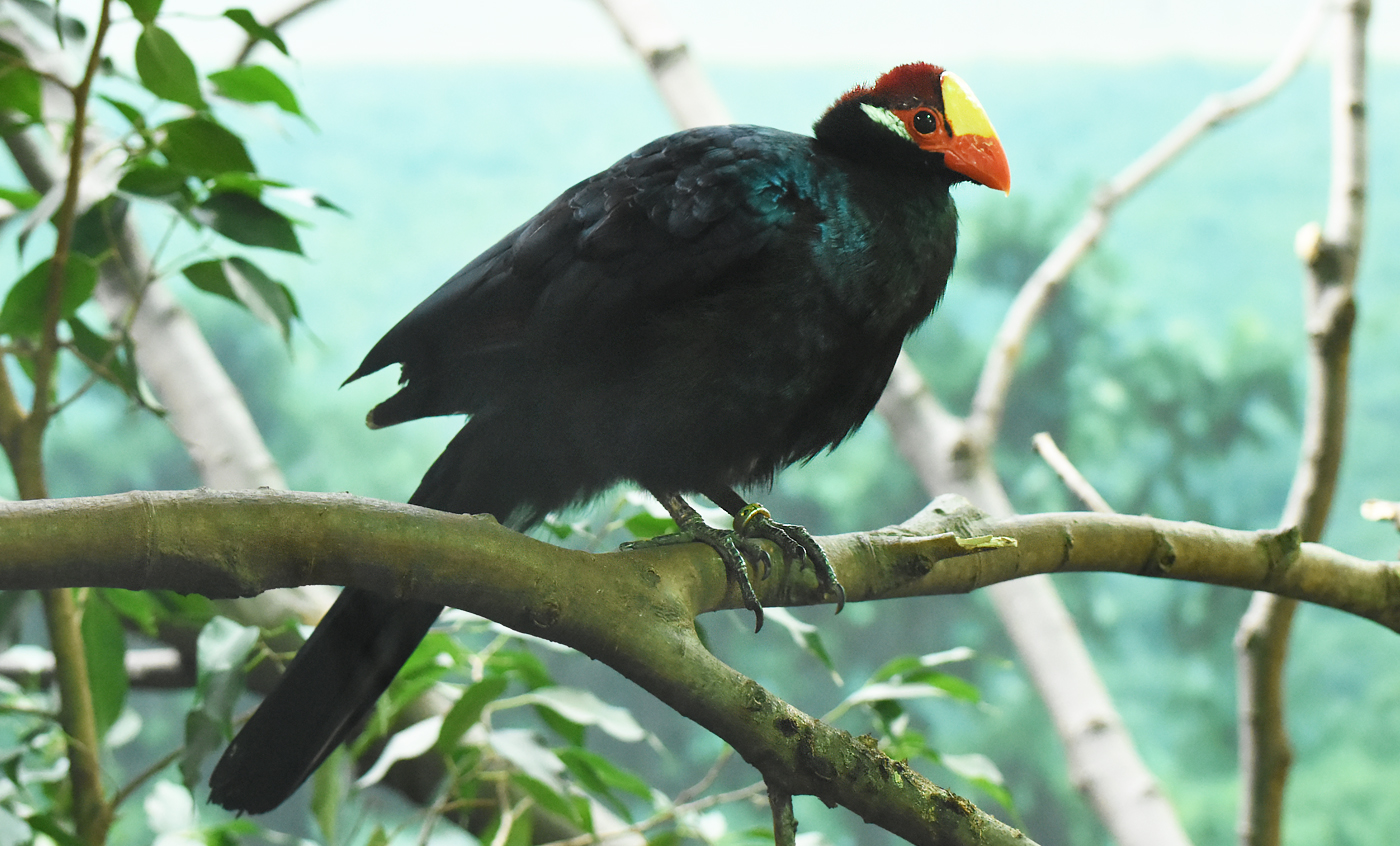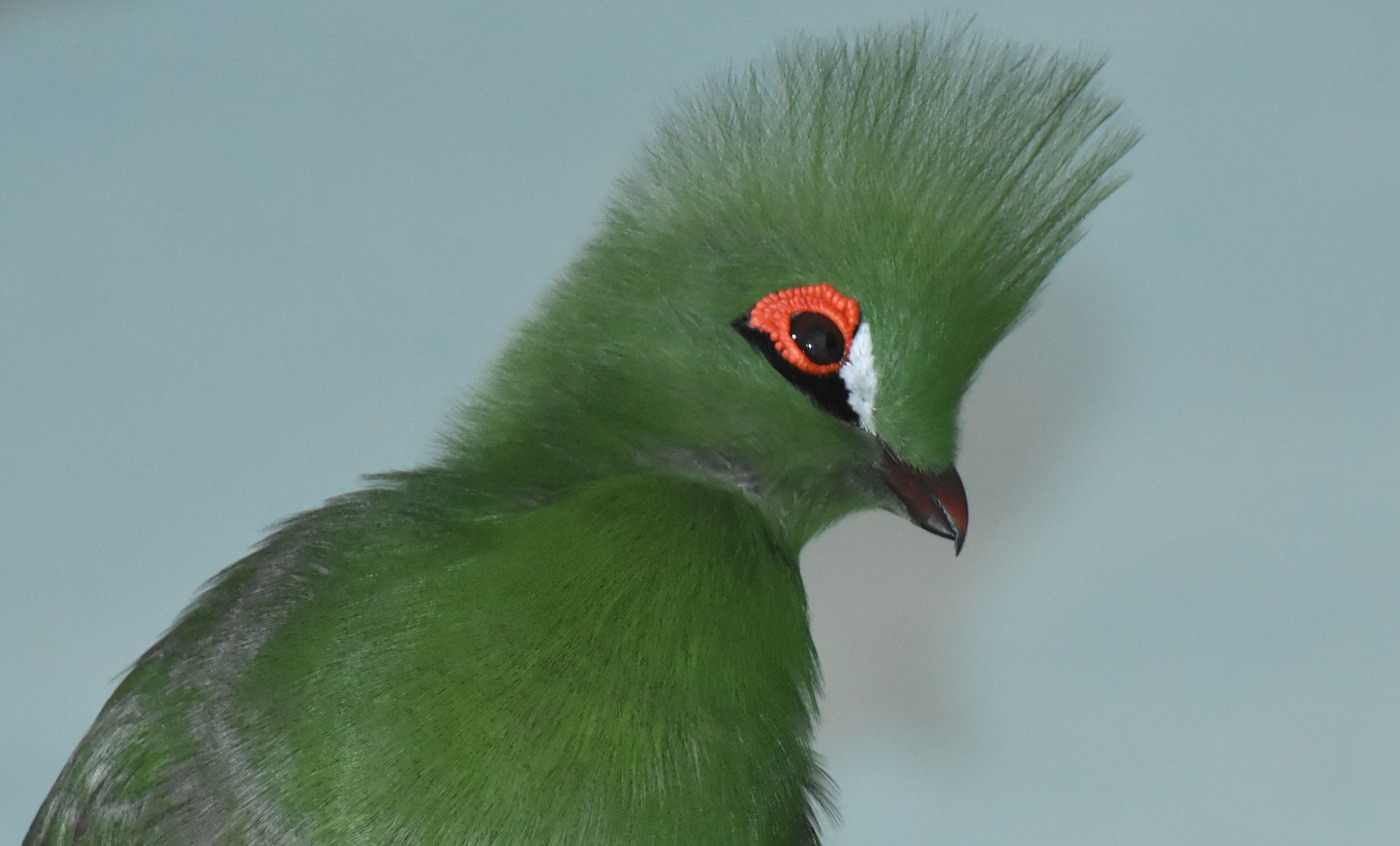Western gray plantain-eater
Almost exclusively fruit-eating, it lives in the acacia savannah, open forests and crop-growing areas of large parts of West Africa. Unlike other turacos, which are characterised by their colourful plumage and attractive crests, the colouring of this species is discreet whitish, brown and grey tones.
Natural habit
Areas of forest and savannah of western Africa
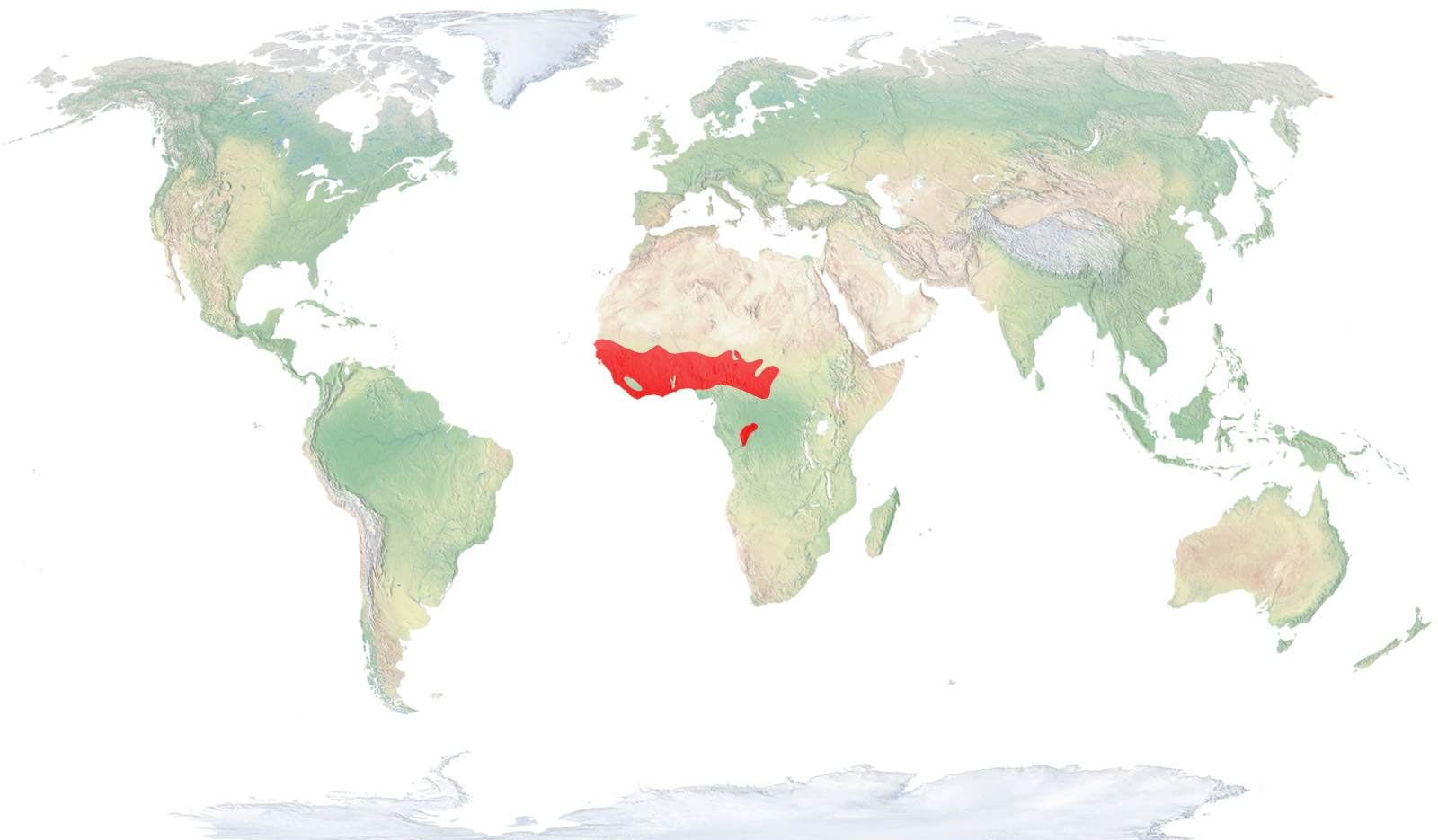
- Distribution / Resident
- Breeding
- Wintering
- Subspecies
Risk level
- Extint
- Extint in the wild
- Critically endangered
- In Danger
- Vulnerable
- Near threatened
- Minor concern
- Insufficient data
- Not evaluated
Taxonomy
Physical characteristics
Biology
Reproduction
Biology
Unlike other turacos, which are characterised by their colourful plumage and eye-catching tufts on the head, this species’ colouring consists of discrete white, brown and grey tones.
It inhabits acacia savannahs, open woods and croplands in a good part of West Africa.
Its diet is almost exclusively frugivorous.
It tends to breed between January and August, although this varies ostensibly depending on the climate and where it lives, as its distribution area is quite extensive. It builds a platform of branches and dry plant matter some 30 centimetres in diameter, usually from six to 15 metres off the ground, in which it lays two or three bright green or light blue eggs, which both members of the pair incubate 27 or 28 days.
Sedentary.
It is not endangered and is locally abundant, especially in Senegal’s acacia savannahs and woods.




